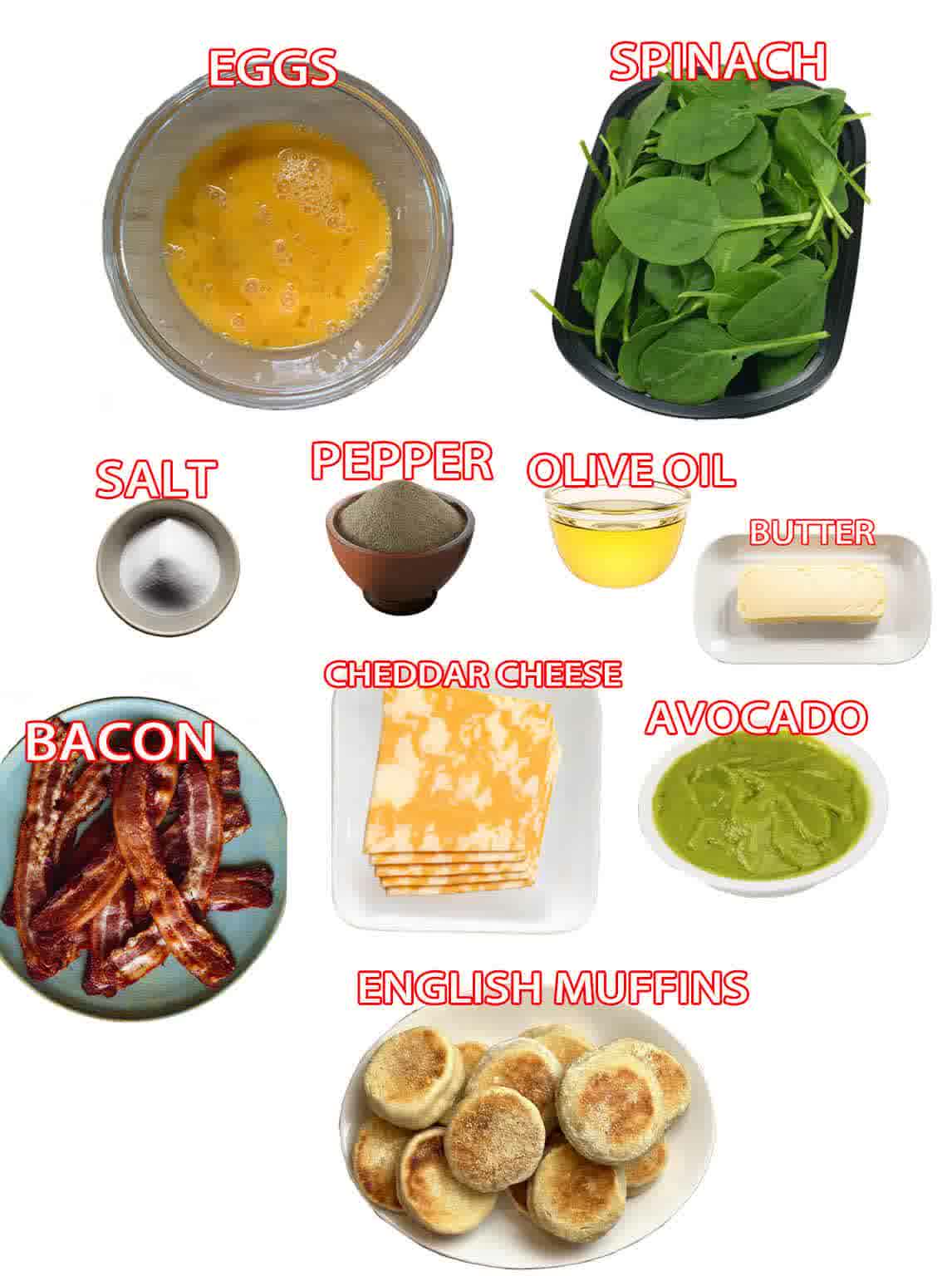11/14/2023
Portability and Convenience- Sandwiches are highly portable, making them suitable for school, work, picnics, or travel. They don't require utensils, adding to their convenience.
Reasons Why Sandwiches Are Popular:
-
Portability and Convenience: Sandwiches are highly portable, making them suitable for school, work, picnics, or travel. They don't require utensils, adding to their convenience.
-
Versatility: The diversity in sandwich preparation allows individuals to choose from a wide range of ingredient combinations, catering to personal tastes and preferences. From simple ham and cheese to elaborate grilled chicken salads, there's a sandwich for everyone.
-
Adaptable to Dietary Preferences: Due to their flexibility, sandwiches can accommodate various dietary requirements, including vegetarian, gluten-free, low-carb, and more. People can customize sandwiches based on their dietary habits and needs.
-
Quick and Easy: Crafting a sandwich typically involves minimal cooking, as assembling ingredients between slices of bread is the primary step. This simplicity makes sandwiches suitable for those with fast-paced lifestyles or limited time.
-
Balanced Nutrition: Sandwiches can encompass a balanced mix of protein, vegetables, carbohydrates, and fats, offering a relatively well-rounded nutritional profile. This makes them a convenient option for a quick meal or a light snack.
-
Economical: The ingredients used in sandwiches are often cost-effective, and common items like ham, cheese, and vegetables are readily available, reducing overall costs.
-
Year-Round Appeal: Whether it's a cold sandwich in the summer or a warm grilled sandwich in the winter, sandwiches are versatile and suitable for consumption in various seasons and weather conditions.
In summary, the versatility, portability, adaptability to dietary preferences, quick preparation, nutritional balance, cost-effectiveness, and year-round appeal contribute to the widespread popularity of sandwiches, catering to the demands of modern, busy lifestyles.

Sandwiches are a very flexible food, suitable for a variety of different occasions and times. Here are some situations and characteristics for eating sandwiches:
Breakfast: Sandwiches can be an ideal choice for breakfast, especially those containing eggs, bacon, cheese and other ingredients. They provide rich nutrition and energy and are suitable for a quick and healthy breakfast.
Lunch: Sandwiches are a portable lunch option that's perfect for taking with you during the workday or eating in the office. It can be adapted to suit personal tastes and preferences, making it a convenient and delicious lunch solution.
Afternoon Tea: Sandwiches are also an easy afternoon tea treat. You can choose from some refreshing combinations, such as cucumber sandwich or chicken salad sandwich, and enjoy a leisurely afternoon tea with a cup of tea or coffee.
Dinner: Light sandwiches can also be part of dinner, especially when a lighter meal is desired. You can choose some healthy ingredients, such as vegetables, fish, etc., to make delicious sandwiches.
Features:
Portable and Convenient: Sandwiches can be easily transported, making them ideal for takeout or picnics.
Variety: Since the sandwiches can be assembled in a variety of ways, they can be adjusted to suit individual tastes and needs to suit different meal requirements.
Quick and easy: Making a sandwich usually doesn’t require complicated cooking, making it ideal for those who are pressed for time or don’t want to spend too much time cooking.

Ingredients You’ll Need

English Muffins:
English muffins are a type of round, flat yeast-leavened bread known for their soft texture and slightly crumbly interior. Despite their name, they are not actually English in origin; they are believed to have been created in the United States in the late 1800s. English muffins have become a popular breakfast item and are widely enjoyed as a base for various toppings.
Butter:
-
Enhancing Flavor: Butter contributes a rich, creamy flavor to the sandwich. Spreading a layer of butter on English muffins, for example, adds a delightful dairy richness that complements other ingredients.
-
Preventing Sogginess: In certain sandwiches, particularly those that involve heating, spreading butter can help prevent the bread from absorbing too much moisture, thereby avoiding an overly soggy texture. This is particularly crucial when the sandwich contains liquid or moist ingredients.
-
Texture Improvement: The melting properties of butter add a smooth texture to the sandwich, enhancing the overall mouthfeel.
-
Facilitating Toasting: If you choose to heat or toast your sandwich, butter can contribute to a better toasting effect, creating a crispier exterior and adding layers of texture.
-
Promoting Baking Effects: In sandwiches that undergo baking, butter can aid in achieving a more flavorful and golden-brown crust, enhancing the overall appeal.
-
Pairing with Other Ingredients: Butter pairs well with a variety of sandwich fillings. Whether combined with jam on bread or used to sauté vegetables for a savory sandwich, butter adds a classic and complementary element to the overall flavor profile.
In summary, butter in a sandwich serves not only as a flavor enhancer but also plays a crucial role in managing texture, preventing sogginess, and contributing to the overall appeal, especially when the sandwich involves toasting or baking. Personal preferences and dietary considerations may influence the decision to use butter in a sandwich.
Olive Oil:
-
Lubrication and Moisture: Gently spreading olive oil on bread or rolls adds a lubricating effect, preventing the sandwich from becoming excessively dry. This is particularly useful in crafting cold sandwiches.
-
Flavor Enhancement: Olive oil, with its rich fruity flavor, can contribute a unique taste to the sandwich. Especially in vegetarian or Mediterranean-style sandwiches, olive oil serves as a delicious seasoning.
-
Complementing Vegetables and Salads: For sandwiches with vegetables or salads, olive oil can function as a light dressing, providing additional flavor and ensuring the vegetable layers are more succulent.
-
Roasting and Baking: If intending to heat the sandwich in an oven or on a grill, olive oil can enhance the roasting effect, resulting in a crispier surface.
-
Alternative to Other Spreads: For those looking to avoid butter or other spreads, olive oil can serve as a healthier alternative, providing some fats while maintaining a pleasing texture.
Spinach:
-
Nutritional Boost: Spinach is a nutrient-rich vegetable, containing an abundance of vitamins, minerals, and antioxidants. Adding spinach to a sandwich enhances its nutritional value.
-
Color Enhancement: The deep green color of spinach adds vibrancy to a sandwich, making it visually appealing. Colorful sandwiches are often more appetizing.
-
Texture Enhancement: Spinach has a tender texture that contributes a unique element to the sandwich. Its tender leaves provide a crisp yet delicate sensation when bitten into.
-
Vegetarian Option: For vegetarians, spinach serves as an excellent vegetable choice, providing richness in both texture and nutrition to a sandwich, creating a delicious vegetarian option.
-
Pairing with Other Ingredients: Spinach pairs well with various ingredients such as eggs, cheese, ham, etc., contributing to a sandwich with a diverse and rich texture.
-
Light and Fresh Texture: Spinach is relatively light, adding volume to the sandwich without overwhelming it. This contributes to an overall light and fresh texture.
Eggs:
-
High-Quality Protein Source: Eggs serve as an excellent source of high-quality protein, contributing to the sandwich's protein content, aiding in satiety, and supporting overall body maintenance.
-
Texture Enhancement: Whether fried or boiled, eggs add a rich and diverse texture to the sandwich. The soft and tender yolk and the slightly chewy egg white provide a delightful variation in mouthfeel.
-
Flavor Addition: Eggs have a subtle, milky flavor that adds a unique taste to the sandwich. The aroma of fried eggs and the richness of the yolk contribute to an enhanced overall flavor experience.
Seasonings:
Fine kosher salt and ground black pepper are used to season the eggs.
Cheddar Cheese :
-
Imparting Creamy Flavor: Cheddar cheese brings a rich and creamy flavor to the sandwich, enhancing it with the delicious taste of cheese. This distinctive flavor blends harmoniously with other ingredients, creating a mouthwatering experience.
-
Adding Texture: Cheddar cheese typically has a firm texture that adds a delightful chewiness to the sandwich. Incorporating layers of cheese contributes to a more satisfying and varied texture.
-
Enhancing Melted Consistency: When heated, Cheddar cheese melts and develops a gooey consistency, helping to bind the layers of the sandwich together and improving the overall mouthfeel.
-
Complementing Ingredients: Cheddar cheese pairs well with a variety of ingredients such as ham, eggs, vegetables, creating a rich and flavorful experience in the sandwich.
-
Increasing Satiety: With its higher protein and fat content, Cheddar cheese contributes to a sense of fullness, making the sandwich a more satiating meal.
-
Providing Nutrients: Cheddar cheese is rich in calcium and protein, offering additional nutritional value to the sandwich and contributing to the overall nutritional needs of the body.
-
Adding Color: The yellow hues of Cheddar cheese add visual appeal to the sandwich, making it look more enticing.
Bacon:
-
Imparting Salty Flavor: Bacon brings a distinct salty flavor to the sandwich, providing a delicious salty taste. This flavor harmonizes with other ingredients, creating a pleasurable culinary experience.
-
Contributing Smoky Notes: Often smoked, bacon carries a unique smoky flavor. This smokiness adds depth and complexity to the entire sandwich, enhancing the overall taste.
-
Adding Texture and Crunchiness: Bacon's crispy texture adds an extra layer of crunchiness to the sandwich. The crispy sensation contrasts with the softness of other ingredients, creating a more diverse and satisfying texture.
-
Pairing with Other Ingredients: Bacon pairs well with a variety of ingredients such as eggs, lettuce, tomatoes, etc., contributing to a more complex and flavorful sandwich.
-
Providing Fat and Balancing Flavors: The fat content in bacon adds richness to the sandwich, contributing to a sense of fullness. It also balances the flavors of other ingredients, making the entire sandwich more delicious.
Avocado:
-
Creamy Flavor Profile: Avocado boasts a rich and creamy flavor, adding a unique taste to the sandwich. Its creamy taste blends harmoniously with other ingredients, creating a delightful culinary experience.
-
Smooth and Creamy Texture: The texture of avocado is smooth and creamy, imparting a velvety and moist sensation to the sandwich. The buttery consistency enhances the overall richness of the sandwich.
-
Providing Healthy Fats: Avocado is rich in monounsaturated fats, serving as a healthy fat source. This contributes to a sense of satiety while providing essential energy for the body.
-
Nutrient-Rich Addition: Avocado contains various vitamins, minerals, and antioxidants, adding extra nutritional value to the sandwich and contributing to overall health.
-
Pairing with Other Ingredients: Avocado complements a variety of ingredients such as ham, eggs, vegetables, enhancing the sandwich with a diverse and rich flavor profile.
-
Adding Color and Flavor: The distinct green color of avocado adds vibrancy to the sandwich, making it visually appealing. Additionally, the avocado's flavor contributes to the overall taste profile of the sandwich.
How To Make An Epic Breakfast Sandwich

1.Preparation: Take out all the ingredients and make sure they have been washed and cut.
2.Toast the waffles: Grill the waffles in a skillet over medium heat, about 2-3 minutes on each side, or until golden brown. Apply a layer of butter after taking it out.
3.Fry the eggs: In the same pan, add the olive oil and when the oil is hot, beat in the eggs. Stir gently with a spatula to combine the egg whites and yolks. Depending on personal taste, you can choose to keep the yolks intact or stir well.


4.Add spinach: Add chopped spinach to the omelette and stir-fry until spinach is soft and waxy, about 1-2 minutes. Season with salt and black pepper, if desired.
5.Assemble the sandwich: Place fried eggs and spinach on a puff pastry, then top with cheddar cheese, bacon and avocado slices. Finally cover with another muffin.
6.Bake: Place the assembled sandwiches in a preheated to medium oven and bake for about 3-5 minutes, or until the cheese is melted.
7.Enjoy: Remove the sandwich and cut in half for a delicious Cheesy Spinach Bacon Breakfast Sandwich.
Production time: about 15-20 minutes
This sandwich combines the delicious flavors of fresh spinach, fried eggs, bacon and avocado with the tangy taste of cheddar cheese for a simple yet delicious breakfast option.

Can I Use Frozen Spinach?
Yes, you can use frozen spinach in many recipes, including sandwiches. Frozen spinach is a convenient alternative to fresh spinach, and it works well in dishes where the texture of fresh spinach is not crucial, such as when it's cooked or mixed into fillings.
When using frozen spinach in a sandwich, follow these steps:
-
Thaw and Drain: Thaw the frozen spinach according to the package instructions. Once thawed, use a kitchen towel or paper towels to press out excess moisture. This helps prevent your sandwich from becoming too soggy.
-
Cooking (optional): Depending on your preference, you can cook the thawed and drained frozen spinach briefly. This step can enhance the flavor and remove any residual moisture. Sautéing in a bit of olive oil with garlic is a common method.
-
Incorporate Into Sandwich: Add the thawed and prepared frozen spinach to your sandwich as you would with fresh spinach. It can be layered onto the bread or mixed into other fillings.
Keep in mind that the flavor and texture of frozen spinach may be slightly different from fresh spinach. However, it remains a convenient and nutritious option, especially when fresh spinach is not readily available.
What Keeps Eggs Fluffy?
Several factors contribute to keeping eggs fluffy when they are cooked. Here are some key elements:
-
Whipping/Aerating: When eggs are whipped or beaten, air is incorporated into the mixture. This aeration creates tiny air bubbles that expand during cooking, giving the eggs a light and fluffy texture. Whipping eggs with a fork, whisk, or an electric mixer can achieve this.
-
Proper Cooking Temperature: Cooking eggs over medium to medium-low heat helps maintain their fluffiness. High heat can cause eggs to cook too quickly, resulting in a firmer and less fluffy texture. Slow and steady cooking allows the proteins in the eggs to coagulate more evenly.
-
Gentle Cooking Techniques: Gentle cooking techniques, such as scrambling eggs slowly or making an omelet over medium heat, prevent the eggs from becoming tough. Stirring eggs too vigorously or cooking them at too high a temperature can lead to a denser texture.
-
Freshness of Eggs: Fresh eggs tend to be fluffier because the proteins in the whites have a stronger ability to hold air. Older eggs may still be perfectly edible, but they may not whip up as well.
-
Adding Liquid: Adding a small amount of liquid, such as milk or cream, to the beaten eggs can contribute to fluffiness. The liquid turns into steam during cooking, creating additional air pockets and lightening the texture.
-
Not Overcooking: Overcooking eggs can lead to a dry and rubbery texture. It's essential to cook eggs until they are just set but still slightly creamy. The residual heat will continue cooking the eggs even after they are removed from the heat source.
By paying attention to these factors and incorporating proper cooking techniques, you can achieve and maintain the fluffiness of eggs in various dishes.
Expert Tips:
Brush on the butter.
When making a sandwich and using the instruction "brush on the butter," there are a few key considerations to keep in mind:
Temperature of the Butter:
The butter should be melted but not too hot. If it's too hot, it can saturate the bread quickly, making it soggy. Allow the melted butter to cool slightly before brushing it onto the bread.
Even Distribution:
Use a brush to evenly distribute the melted butter over the surface of the bread. This ensures that each bite has a consistent flavor and texture.
Amount of Butter:
Use an appropriate amount of melted butter. Too much can make the sandwich overly greasy, while too little may not impart enough flavor. Adjust the quantity based on personal preference.
Seasoning Options:
Consider adding seasonings or herbs to the melted butter for additional flavor. Garlic, herbs like rosemary or thyme, or a pinch of salt can enhance the overall taste of the sandwich.
Type of Bread:
Different types of bread absorb butter differently. Hearty or dense bread may need a bit more butter, while lighter bread may require less. Adjust accordingly based on the characteristics of the bread you're using.
Timing:
Brush the butter onto the bread just before cooking or assembling the sandwich. This ensures that the bread doesn't become overly saturated or lose its crispness.
Baking or Grilling:
If you plan to bake or grill the sandwich, brushing butter on the outer surfaces can contribute to a golden-brown and crispy texture. Ensure the cooking method complements the use of butter.
Consider the Filling:
Be mindful of the filling ingredients. If the sandwich already contains moist or oily components, such as tomatoes or mayonnaise, you might want to adjust the amount of butter to prevent the sandwich from becoming too greasy.
Season the eggs.
Salt and Pepper:
- Sprinkle a pinch of salt and pepper over the eggs. Salt helps to bring out the natural flavors of the eggs, while pepper adds a subtle heat. Adjust the amount of salt and pepper based on your taste preferences.
**Get the avocado ready last. **
The instruction "get the avocado ready last" suggests that you should prepare and handle the avocado as the final step in your cooking or food preparation process. Avocado tends to oxidize and turn brown when exposed to air, so preparing it last helps maintain its freshness and vibrant color.
Storage
Sandwiches will keep in the fridge for up to 3 days.
When reheating, ensure that the sandwich reaches a sufficiently high temperature, aiming for an internal temperature of 75 degrees Celsius or above to eliminate potential bacteria.
Strive for even heating throughout the sandwich. This can be achieved by cutting the sandwich into smaller pieces or layers, allowing heat to penetrate all components uniformly.
Prevent overheating to avoid drying out the sandwich, especially when it contains ingredients such as vegetables, cheese, or other components sensitive to heat.